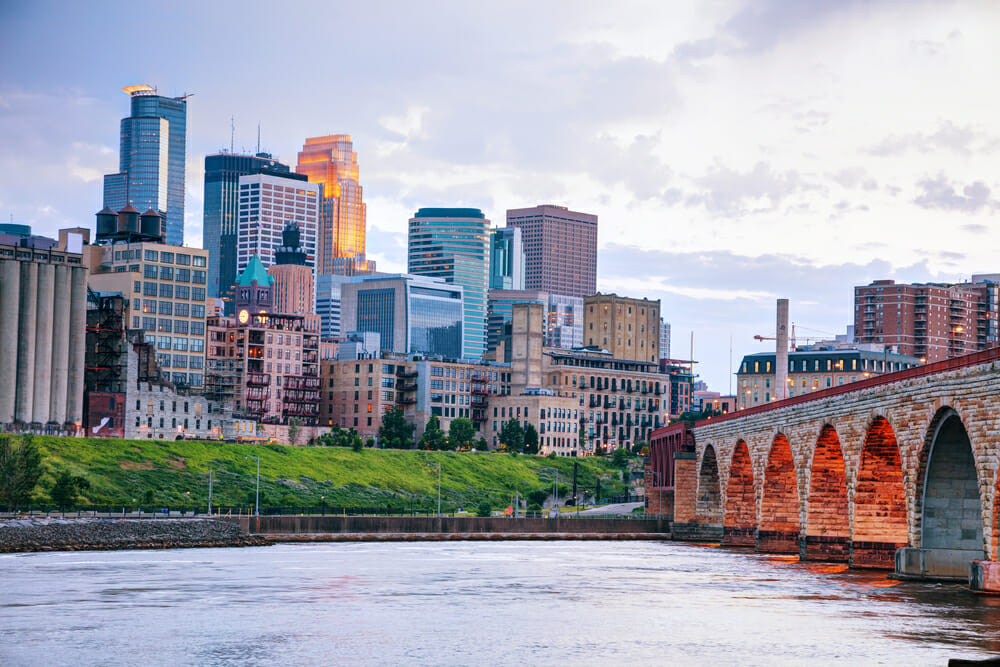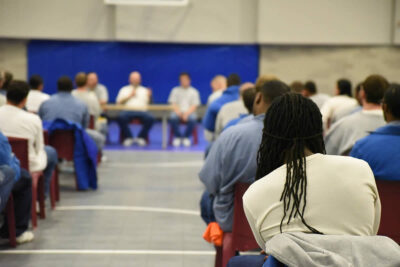
Criminal Rehabilitation and Justice in Minnesota
How many people are incarcerated in Minnesota? What are the biggest prisons in Minnesota? These are some of the first questions that people interested in learning about the criminal justice system in Minnesota should ask. According to the Bureau of Justice Assistance, Minnesota ranks 47th in the nation for the percentage of its population that the state incarcerates. Only Rhode Island, Maine, and Massachusetts have lower incarceration rates than Minnesota. Minnesota incarcerates about 145 people for every 100,000 living in the state.1
According to the National Institute of Corrections, Minnesota has 82 jails in 87 counties. The jail population was 7,070 as of 2019. Minnesota also has ten state prisons that incarcerate some 9,982 people. The state runs a community corrections program that has 98,390 people under probation and 7,243 under parole.2 Minnesota operates its Department of Corrections with a staff of 4,384 and an annual budget of $1,212,158. According to the Urban Institute, the Department of Corrections is the seventh costliest item in the state’s annual budget, just behind police, highways, and roads.3

The Minnesota Correctional Facility – Faribault. Image courtesy of mn.gov
Data from the Sentencing Project indicates Minnesota does not contract with private prisons and has not done so in over ten years (the only private facility, the Prairie Correctional Facility, was closed down in 2010).4 There are four federal prisons located in Minnesota. The largest prison in Minnesota, the Minnesota Correctional Facility – Faribault, is a state prison located in Faribault, Minnesota. As of August 2010, it had an adult inmate population of about 2,000 men, which makes it the largest prison in Minnesota when measured by the inmate population.5
Minnesota Crime Rates
One of the easiest ways to understand a state’s criminal justice system is to examine its crime. With that in mind, what is Minnesota’s crime rate? According to the National Institute of Corrections report cited earlier, Minnesota records 236 violent crimes per 100,000 residents and about 2,079 property crimes for every 100,000. According to the Uniform Crime Report produced by the Minnesota Bureau of Criminal Apprehension, Minnesota’s 2021 records indicate there were 201 murders, 68 negligent manslaughters, 10,967 aggravated assaults, 23,522 simple assaults, 9,806 intimidations, 637 kidnappings, 2,019 rapes, 325 cases of sodomy, 128 sexual assaults with an object, 2,536 fondlings, 8 cases of incest, 1 case of statutory rape, 125 commercial sex acts, and 4 cases of involuntary servitude.6
A Look at Recidivism Rates in Minnesota

One way to quickly ascertain how well a state’s carceral system is working is to look at its recidivism rate. Statistical data on recidivism in Minnesota paints a clear picture of the overall efficacy of Minnesota’s criminal justice system because it shows whether or not incarceration is leading to the rehabilitation of inmates. According to the Minnesota Department of Correction’s 2021 Performance Report, the Minnesota criminal justice system has a 24% recidivism rate, meaning about one in four released individuals will re-offend and become re-incarcerated. In short, that means the criminal justice system in Minnesota is not working for about one-fourth of those who go through it.7
Criminal Reform in Minnesota
When examined honestly, the criminal justice system in Minnesota is supposed to do more than incarcerate people who broke the law. Such programs aim to produce rehabilitated individuals who will not go back to committing crimes once they are allowed to leave prison and return to society. To achieve that goal, criminal rehabilitation in Minnesota involves several programs designed to help offenders overcome their criminal inclination. The Minnesota Rehabilitation and Reinvestment Act was passed in 2021 to offer a series of new, evidence-based reform modalities and rehabilitation services for inmates.7
Alternatives to Incarceration in Minnesota
Alternatives to prison in Minnesota should be made available for as many offenders as possible, particularly for nonviolent offenders and offenders whose only crime is personal-use drug possession. It’s known that exposing people to the prison system has downsides, as they often pick up criminal habits, drug addictions, PTSD, and other behavioral issues while incarcerated. For that reason and many others (prisons are expensive for taxpayers, too), it is in the public interest to save incarceration as a last resort and to try to find other means for improving the behavior of individuals within society.
Minnesota’s recent efforts towards incarceration alternatives have been primarily directed towards nonviolent drug possession offenders, as in the case of the Alternative to Incarceration Grant Program of 2017.9

Image courtesy of mn.gov
While progress is being made, policymakers should expand current alternatives to incarceration in Minnesota. Educational programs inside prisons in Minnesota should be utilized whenever possible, particularly when they help offenders improve their knowledge and understanding of themselves, the world, how to safely and happily coexist with others, and how to lead successful, meaningful lives without committing crimes.
For those with underlying issues that led them to crime, officials should utilize rehabilitation programs inside prisons in Minnesota as much as possible to help offenders get better. The goal should be rehabilitation and improving the offender’s overall condition, and the purpose of incarceration should not be retribution and punishment for the individual’s crime(s).
In summary, Minnesota has made some improvements in how it’s modeled its criminal justice system and the broader incarceration system. But there are some areas where it is quite obvious that incarceration experts could make improvements and upgrades. People with family members and loved ones in jail should advocate for more humane, results-based, and evidence-based rehabilitation programs and modalities for their loved ones who committed crimes in Minnesota.
Sources:
- BJS. “Prisoners in 2020 – Statistical Tables.” Bureau of Justice Statistics, 2020. bjs.ojp.gov
- NIC. “Minnesota 2019.” National Institute of Corrections, 2019. nicic.gov
- UrbanInstitute. “Project Minnesota.” Urban Institute, 2022. urban.org
- SentencingProject. “Private Prisons in the United States.” The Sentencing Project, 2019. sentencingproject.org
- MDOC. “Minnesota Correctional Facility – Faribault.”: Minnesota Department of Corrections, 2022. mn.gov
- MBCA. “Uniform Crime Report.” Minnesota Bureau of Criminal Apprehension, 2021. dps.mn.gov
- MDOC. “Performance Report 2021.” Minnesota Department of Corrections, 2021. mn.gov
- MDOC. “The Minnesota Rehabilitation and Reinvestment Act.” Minnesota Department of Corrections, 2022. mn.gov
- MDOC. “Alternatives to Incarceration 2022 Report for the Legislature.” Minnesota Department of Corrections, 2022. mn.gov
Related Articles
Criminal Justice Reform Extends Rights to Felons Who Have Served Their Sentences
For decades, voter enfranchisement or disenfranchisement for incarcerated and formerly incarcerated individuals has been debated. An estimated 4.6 million Americans are barred from voting due...
Read more >>
Minnesota Just Became the 28th State to Abolish Life-Without-Parole Sentences for Children
In May of 2023, Minnesota became the latest state to abolish life-without-parole sentences for juvenile offenders, the 28th state to enact criminal justice reform laws...
Read more >>
Students Succeeding in US Correctional Facilities
"What a wonderful way of life. Drugs can and will destroy any chance of success or happiness to anybody's life. I always thought them to...
Read more >>




